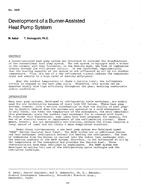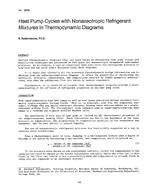-
-
Available Formats
- Options
- Availability
- Priced From ( in USD )
-
Available Formats
-
- Immediate download
- $16.00
- Add to Cart
Customers Who Bought This Also Bought
-

KC-2830 -- Comparative Study of Two Types of Solar Regene...
Priced From $16.00 -

KC-2828 (RP-391) -- Estimates of Recommended Heat Gains D...
Priced From $16.00 -

KC-2835 -- Development of a Burner-Assisted Heat Pump System
Priced From $16.00 -

KC-2836 -- Heat Pump Cycles with Nonazeotropic Refrigeran...
Priced From $16.00
About This Item
Full Description
An experimental investigation was undertaken to characterize the effect of Reynolds number, air humidity, air temperature, and plate temperature on frost growth and frost density on a vertical plate in a parallel flow geometry. Test conditions were limited to plate temperatures from 10 to 23°F (–5 to –12°C), air humidity ratios from 0.00382 to 0.00514 lb/lba (kg/kga), Reynolds numbers from 4400 to 32400, and air temperatures from 41 to 54°F (5 to 12°C). Frost growth was measured at six locations on the plate while frost density was measured at two locations.
Frost growth increased with increasing Reynolds numbers for Reynolds numbers less than 15900. Above this Reynolds number, frost growth showed no dependence on the Reynolds number. Frost growth was found to be strongly dependent on the heat exchanger plate temperature and the air humidity. Air temperature had only a minor effect on frost growth. An empirical correlation relating frost height to time, Reynolds number, plate temperature, and air humidity was developed.
Frost density increased with time and with Reynolds number. Frost toward the front of the plate was more dense than toward the rear. Frost density showed only small variation with air humidity, air temperature, and plate temperature.





